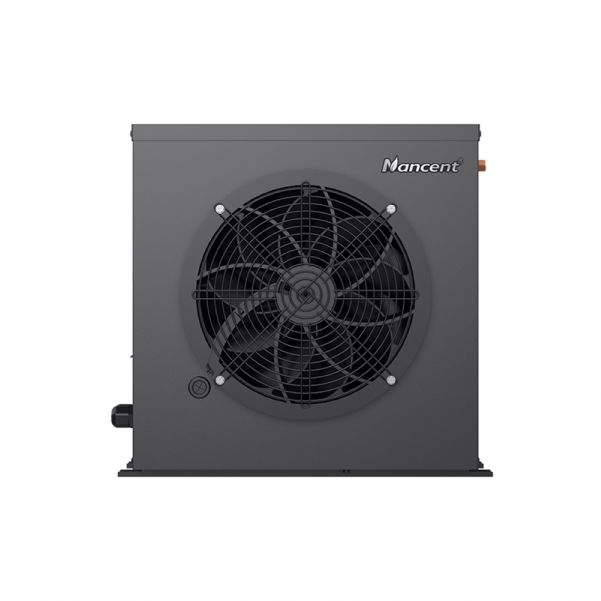About NANCENT
Find out more about Nancent
Driven by R&D,
powered by expertise
Heal the planet,
one home at a time
Factory Tour
Products
Get your ultimate
cold therapy solution
Elevate your spa experience
to new heights
Elevate your pool experience
Experience the future
of home comfort
The smart, efficient way
to heat your water
Services
Complete service
from start to finish
Fast, regional support
Tailored solutions
for specific needs
Quick answers
to common questions
June 11, 2025
Are you tired of dealing with warm water in your ice bath? Warm water can reduce the benefits of cold therapy. It can make recovery less effective. A cold plunge chiller machine offers a solution. This machine keeps your water at the optimal temperature for ice baths. Want to know how it works? Here’s what you need to learn about cold tub water chillers and their technology.

A cold plunge chiller is a specialized cooling system that continuously regulates and maintains the temperature of the water in your cold plunge tub. These machines are especially useful for athletes or anyone who incorporates cold therapy into their routine, such as after intense workouts or injury recovery. With a cold plunge chiller, you don't have to worry about the water warming up, allowing you to reap the full benefits of cold therapy.
In essence, a cold plunge chiller works by circulating water through a cooling unit, which lowers the water temperature to your desired level. The cooling system typically involves several key components, including a compressor, evaporator, and condenser. These components work together to remove heat from the water, keeping it consistently cold. Once the water is chilled, it’s circulated back into the tub for continuous cooling.
To understand how a cold plunge chiller works, it’s important to break down the key stages of the cooling process. Let’s go through the cycle step-by-step:
When you first turn on the cold plunge chiller, the system draws warm water from your ice bath into a coil system. The temperature of this water is typically higher than the desired temperature for an ice bath, which is usually between 50°F to 60°F (10°C to 15°C). The chiller needs to lower the water temperature, and this is where the process begins.
Once the warm water enters the system, it passes through the compressor. The compressor's job is to compress a refrigerant gas, which increases both its temperature and pressure. This step is crucial because it prepares the refrigerant to absorb heat efficiently in the next stages of the cycle.
The now hot and pressurized refrigerant flows through a condenser. In this stage, the refrigerant is cooled down as it releases the heat it absorbed from the water into the outside air. The water that has been drawn in from the tub then enters an evaporator coil. The evaporator works by allowing the refrigerant to absorb the heat from the water, thus cooling the water as it circulates through the system.
Once the water cools down, it is pumped back into the ice bath, maintaining a consistently low temperature. This continuous cycle of water circulation and refrigerant heat exchange ensures that your ice bath stays cold for the duration of your recovery session.
Numerous studies have shown that ice baths can help reduce muscle soreness and accelerate recovery after intense physical activity. Research indicates that ice baths can reduce muscle soreness by up to 20%. However, the temperature of the water is key. If the water is too warm, it won’t have the same beneficial effects on muscle recovery, which is why a cold plunge chiller is such a valuable tool.
Example: A study published in the Journal of Sports Science & Medicine found that athletes who participated in regular cold water immersion showed significant reductions in muscle soreness and inflammation compared to those who used warm water or no cold therapy at all.
| Component | Function |
|---|---|
| Compressor | Compresses refrigerant gas. |
| Evaporator | Cools water by absorbing heat. |
| Condenser | Releases heat to the outside air. |
A cold plunge chiller is an essential tool for anyone who wants to get the maximum benefit from ice baths. By ensuring that the water stays at the ideal temperature, it helps enhance recovery, reduce muscle soreness, and support overall wellness. Whether you're an athlete, fitness enthusiast, or just someone looking to improve your health, investing in a cold plunge chiller can significantly improve the effectiveness of your cold therapy sessions.
By understanding how these chillers work, you can make the most of this technology and incorporate it into your routine more effectively. Whether you’re recovering from a sports injury or simply seeking a way to boost circulation and reduce stress, maintaining the optimal temperature in your ice bath will yield the best results.
Generally, it takes 10 to 20 minutes to cool the water to the desired temperature.
A good temperature for ice baths is between 50°F to 60°F (10°C to 15°C).
Yes, but you need a more powerful unit designed for larger volumes of water.
Latest News
Monobloc vs Split Space Heating Heat Pump: Which One Should You Choose?
September 25, 2025
What is a Space Heating Heat Pump? [2025 Comprehensive Guide]
September 15, 2025
How Does a Swimming Pool Heat Pump Work?
August 12, 2025
Nancent Eco-energy Solution Co., Ltd.
Tel.: +86 760 2250 5095
Phone: +86 190 0200 0096
E-mail: info@nancent.com
Add.: No. 2, Shengkai Road, Huangpu Town, Zhongshan, Guangdong, P.R. China

![What is a Space Heating Heat Pump? [2025 Comprehensive Guide] What is a Space Heating Heat Pump? [2025 Comprehensive Guide]](data/watermark/main/20250925/68d4ff063860f406_270.png)
